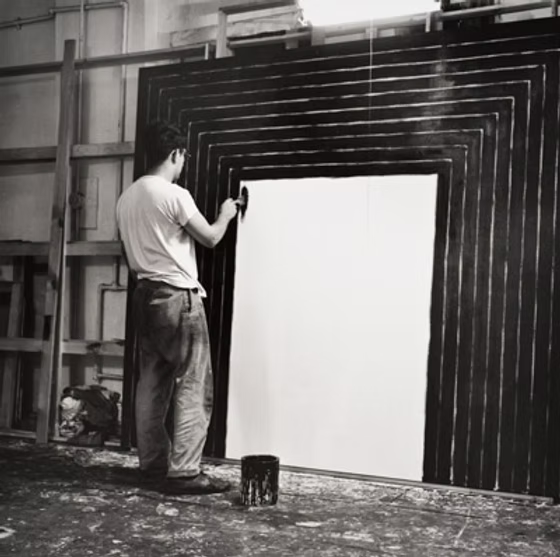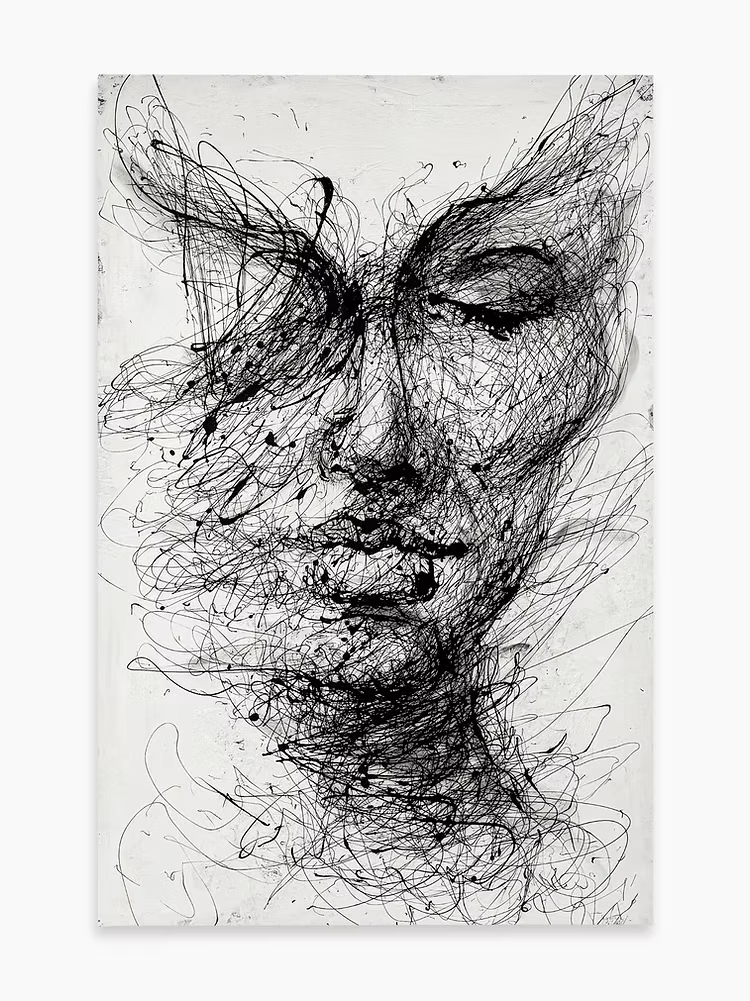Famous Black & White Paintings – Weekly inspiration
Black and white abstract art captures our imaginations and emotions, engaging viewers on an inward journey of interpretation. This timeless form of abstract painting remains timeless over time, complimenting any interior design style perfectly.
Black and white abstract art has proven itself an enduring phenomenon thanks to its ability to focus on composition and line. Artists use this form of expression to express their unique creative vision through black-and-white art. This versatility has made black-and-white abstract work such an impressive phenomenon.
The Power of Contrast

Black and white paintings provide the ideal contrast for drawing out intricate details in abstract art, without distracting colors distracting viewers’ focus from its composition, form, and texture – rather than representing specific subjects – creating an immersive aesthetic experience that engages and inspires its viewers.
Black and white abstract artworks rely on differences in shape, line, texture, tone and composition to communicate meaning and emotion. Unlike traditional art forms that incorporate cultural references or symbols into their imagery, this form of expression offers universal language that spans time and space.
Modern art boasts many different forms of black and white artworks that utilize this combination for various effects. Kazimir Malevich used black-and-white tones in his signature “Black Square,” for instance, to establish nonrepresentational abstract using geometric forms to communicate ideas. Josef Albers, Frank Stella, and Cy Twombly all utilized black-and-white to explore its expressive capabilities to challenge perception and evoke emotion.
As a result, this artistic style remains widely appreciated today. Its timeless expression transcends trends and design aesthetics alike; black and white abstract canvas paintings make beautiful focal points in contemporary rooms as well as adding classic charm to more traditional interior spaces.
Cart with Black Ox by Vincent Van Gogh

Vincent Van Gogh painted one of his earliest paintings, completed in 1884, depicting an ox being pulled to a cart in an otherwise barren field – an early depiction of physical labor that may be perceived as depressing and oppressive.
Van Gogh took an exciting new turn with this dark work. His use of color and physical brushstrokes revolutionized art-making practices; this work predated his famous vibrant palette and phantasmagoric style that would later come to define his work in Nuenen and Arles where he ultimately established his place as an artist.
Van Gogh explored peasant life during this period through numerous paintings depicting rural areas and depictions of human bodies, like The Ox-Cart. This bleak depiction shows just how hard life could be at that time for rural dwellers.
This work showcases the influence of artists of the Barbizon School who painted life as it existed on farms and villages, with Van Gogh among those representing this school trying to capture these details to convey an air of authenticity in his artworks.
Van Gogh captured both the beauty of nature and its inhabitants as they struggled against harsh circumstances in rural environments with this work, reflecting changes over time and hardships faced by poor rural dwellers. He captured both beauty and struggle on canvas – something many artists fail to do effectively.
The Absence of Color

Black and white abstract art creates an eye-catching minimalist aesthetic, drawing attention to shapes, lines, and textures through striking images that combine black with white colors for maximum impact. Black-white abstract art works well in many different design settings and complements different aesthetics perfectly.
Without color to distract us, paintings that feature only shapes and lines force viewers to focus more closely on their interplay, leading them to interpret it and discover hidden meanings within its composition. This high visual stimulation stimulates our imaginations further and fosters dialogue between viewer and artwork that may lead to both an emotional bonding experience as well as meaningful contemplation.
Though technically not a color, black has long been used as a symbol of negative connotations in art and culture due to its negative associations. Black often symbolizes death, mourning and darkness for many cultures worldwide, thus often being employed in historical art works as an allegory for war, disasters and natural catastrophes.
As abstraction and away from realistic art became increasingly popular during the early 20th century, artists began experimenting with color as they moved beyond traditional representations. Abstract black and white paintings became an especially common theme as they allowed artists to represent abstract concepts without being limited by traditional color palettes. Malevich’s iconic Black Square established new standards of what people expected from abstract paintings; setting an example for Minimalist artists Frank Stella and Ad Reinhardt who used mesmerizing geometric patterns created using white lines on painted black surfaces with no hidden meanings or hidden meanings behind their geometric creations.
Guernica by Pablo Picasso

Guernica is one of the definitive works of modern art. This painting depicts German forces’ bombing of a Spanish village during the Spanish Civil War, depicting both human and animal suffering due to this barbaric attack. Picasso used Guernica as an international symbol against war; today, it remains one of the most famous black and white paintings ever painted as well as an influential milestone of Cubist movement.
The background of the mural features a dark gray tone that emphasizes violence and suffering experienced by its subjects – both people and animals alike. Furthermore, its lack of colors helps keep viewers focused on its imagery which reinforces its general theme of injustice during war – while its flat imagery helps further emphasise Cubist shapes of human and animal figures depicted.
Murals often depict scenes from war that symbolize its suffering, such as horses being gored in pain by bullets or bulls standing to demonstrate the strength and resilience of Spanish people. A lightbulb in the center symbolizes this reality too.
Guernica stands as an elegant composition despite its chaotic aesthetic; the balance and organization are striking. Although images appear disjointed and forms disfigured and fragmented, they remain within the large triangle of light where their structures can remain steady. Guernica offers numerous interpretations as each image contains some type of symbolic significance.
Guernica first made its debut at the 1937 World’s Fair in Paris to raise awareness and raise funds for victims of bombing and raise funds for victims of conflict. After that it traveled on a worldwide tour for 19 years until being stored away by MoMA until Spain regained its public liberties; eventually it returned home and is currently displayed permanently at Reina Sofia National Museum of Contemporary Art in Spain.
Emotional Resonance

With vibrant hues often being distracting, black and white abstract art offers artists the ability to convey raw emotions more powerfully through monochromatic artworks that don’t contain color. Contrasting elements can create powerful dramatic effects or evoke feelings such as joy, sadness or tranquility – an evergreen monochromic aesthetic which stands the test of time despite digital art’s dominance. Black and white abstract paintings remain popular today despite digital art becoming an industry standard; testament to its timeless charm.
Chief by Franz Kline

Franz Kline was one of the pioneers in the abstract expressionism movement, creating works that exude an intense energy. Utilizing contrasted shades of black and white for his compositions that capture emotions and sensations with vivid hues that bring his works alive. While his paintings weren’t as complex as Rothko’s works, Kline used color effectively to add impactful appeal.
Kline was greatly inspired by De Kooning and began painting large scale works during the late 1940s. These paintings marked his transition from figuration to abstraction through large gestural abstractions using only black enamel sign paint and house brushes as palette.
Kline’s 1955 paintings White Forms and Accent Grave embraced the notion that white predominated both plane and mass. Sidney Janis observed that both these works and Monitor demonstrated Kline’s exceptional talent for using plane and mass to both localize the white pigment locally while shaping it plastically.
Versatility

Black and white abstract paintings transcend the limitations of color, evoking emotional appeal while inviting viewers to discover deeper levels of interpretation. Stripping away color forces artists to focus more on fundamentals such as composition and contrast resulting in visually impactful artwork that fits effortlessly into different decor styles.
Black abstract art remains a popular choice for homeowners, providing both an elegant backdrop for modern decor and a chic accent for more traditional aesthetics. While some might see this trend as passing, others find it adds drama and intrigue while still maintaining refined elegance in their living spaces.
No matter the room or occasion, large black and white abstract canvas prints offer an eye-catching visual language to elevate any room with. Their powerful contrast between details and subtle nuances amplified without colors is sure to induce contemplation and personal reflection from viewers alike.
Our collection of black and white abstract wall art covers an expansive spectrum of artistic expressions, from geometric patterns to photorealistic renderings and more. Every canvas features black paint strokes and splashes in an oversized format for dramatic impactful statements in contemporary spaces. Additionally, you can frame our black and white canvas art with thin modern black frames for timeless sophistication in transitional or contemporary living spaces; or group it with other neutral abstract paintings to form an artistic gallery wall in either living room or office spaces.
Timeless Appeal

Black and white art has always been associated with elegance, grace, and sophistication. It transcends trends and fads while communicating a timeless message across generations and cultures. Additionally, its monochromatic color scheme provides a powerful platform for artistic expression that showcases shapes, lines, textures and forms at their finest.
Minimalist black and white abstract artworks feature fluid lines and shapes to evoke feelings of calm and sophistication, with intricate and dynamic monochrome patterns also adding depth and dimension. Black and white abstract photography has also proven an effective way to bring a sense of realism and mystery into any living space.
Black and white abstract art may appear simple at first glance, yet its lasting charm lies in its complexity. Capturing intricate lines, textures, forms, and contrast is what keeps black and white abstract art interesting over time; its timeless nature also makes it suitable as decor that won’t go out of fashion quickly.
Black and white abstract artwork fits easily with various interior design styles, such as contemporary, modern, mid-century modern and eclectic decor styles. Furthermore, it adds contrast and visual interest to a room while remaining classic or traditional in its composition.
Black and white abstract wall art can become the center of attention in any living space, drawing in viewers with its sleek lines and contrasts. Or it can serve as the perfect neutral backdrop to bright and colorful pieces in order to add refinement while providing an eye-catching presence in any room. No matter which approach you take when using it, black and white abstract art remains timeless and versatile – surefire way to add drama!

